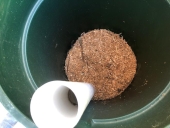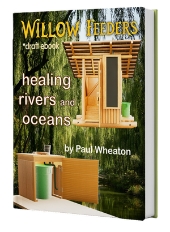
 4
4




The wishbone never could replace the backbone.
 1
1




 2
2




The wishbone never could replace the backbone.
 1
1




Sonja Draven wrote:Why not just say blood is fine?
 2
2




After all, it is just blood. Mostly water and quite biodegradable. ;-)Sonja Draven wrote:Why not just say blood is fine?
Visit Redhawk's soil series: https://permies.com/wiki/redhawk-soil
How permies.com works: https://permies.com/wiki/34193/permies-works-links-threads




paul wheaton wrote:
Sonja Draven wrote:Why not just say blood is fine?
Good point!
 1
1




Nicole Alderman wrote:
paul wheaton wrote:
Sonja Draven wrote:Why not just say blood is fine?
Good point!
Do we want any words about the sawdust, or is this good?




The wishbone never could replace the backbone.




Devoured by giant spiders without benefit of legal counsel isn't called "justice" where I come from!
-Amazon Women On The Moon
 3
3




I'm only 65! That's not to old to learn to be a permie, right?
 2
2




 3
3




paul wheaton wrote:
Nicole Alderman wrote:
paul wheaton wrote:
Sonja Draven wrote:Why not just say blood is fine?
Good point!
Do we want any words about the sawdust, or is this good?
Grammar.
How about "blood in the cans is fine" ??
 2
2




 3
3




paul wheaton wrote:I'm not sure what came over me, but I just started to write this script for a future youtube video. Something to give a quick and simple outline of what is a willow feeder.
Of course, there are a thousand more details to add in. The idea was to try and have something kinda short - just enough to give a person a general idea of what a willow feeder is.
Spelling? Grammar? Ways to make the message simpler and shorter?
 1
1




 3
3




"...the most comprehensive, up-to-date and thoroughly researched book on the topic of composting human manure available anywhere. It includes a review of the historical, cultural and environmental issues pertaining to "human waste," as well as an in depth look at the potential health risks related to humanure recycling, with clear instructions on how to eliminate those dangers in order to safely convert humanure into garden soil
Invasive plants are Earth's way of insisting we notice her medicines. Stephen Herrod Buhner
Everyone learns what works by learning what doesn't work. Stephen Herrod Buhner




 1
1








Rob Teeter wrote:Just curious if anyone has tried to vermicompost their poo before it gets to the willow feeder?
 4
4




 4
4




Burton Sparks wrote:My hesitancy with the Willow Feeder is not sanitation, but social buy-in. One of the major learnings from international efforts to improve sanitation is that it works much better to consult with the people about their culture, needs, fears, etc. before implementing a sanitation project. Here's one example. In my own journey I've seen this as well. I too had come to the conclusion that dry composting toilets were the best theoretical option. I even successfully managed dry composting toilets for a group of over 75 people for a weekend and the result was that people walked away in awe about how well they worked. They even suggested I should turn it into a business. Then I started asking if they would want one in their house and everyone I asked said no. Why? It's just too far of a stretch from where they're at.
 1
1




 1
1




 4
4




paul wheaton wrote:A new video about the willow feeder system
https://www.youtube.com/watch?v=Cxk50Q9GbWw
Blazing trails in disabled homesteading
 4
4




 3
3




paul wheaton wrote:The lid is snug enough to keep insects out. During the two years, the can "breathes". As the temperatures go up and down each day, they gases inside expand and escape, and 12 hours later, fresh air enters. So the material in the can slowly dries out.
I think that five gallon buckets will need to be moved/processed far more often. The math says that a five gallon bucket will need to be processed 7 times more often than a 35 gallon can. But I think that with a 35 gallon can, there will be more in-place composting, so it might be closer to 15 to 20 times.
The pipe has a jagged edge on the bottom. So watery stuff will come to under the pipe and get a chance to dry out.
More sawdust leads to more drying and more preservation.
Blazing trails in disabled homesteading

 1
1




 3
3




Christopher Weeks wrote:I wonder if the normal 5-gallon bucket lids are too air-tight and how they might be altered to let them sigh as Paul describes of the cans he uses.
 2
2




Christopher Weeks wrote:I wonder if the normal 5-gallon bucket lids are too air-tight and how they might be altered to let them sigh as Paul describes of the cans he uses.
























Wil Odin wrote:Keep in mind that people have started to find out that human sewage compost has not been treated for forever-chemicals. This is a thirdhand story, but I was recently told about a family who found out that a lot of their kids health problems was because they’re now organic farm had been a conventional farm that used human sewage Fertilizer in the 80s, But since they didn’t know what a forever chemical was those hadn’t been removed and the soil had incredibly high concentrations of forever chems.
Maybe if you were just using your own families sewage it’s not as big of a deal, but if you are bringing any in you are probably getting mega high concentrations of forever chemicals unless you happen to be in an area where forever chemical remediation has been implemented (Which is probably no place in America).
De-fund the Mosquito Police!
Become extra-civilized...
 2
2





 1
1




paul wheaton wrote:maybe we need a video like the script above to kinda explain the general strategy. AND another video that kinda explains the practical design (the can, with sawdust, the bit of pipe, the willow candy warehouse, the willow trees in spring).
??
- Tim's Homestead Journal - Purchase a copy of Building a Better World in Your Backyard - Purchase 6 Decks of Permaculture Cards -
- Purchase 12x Decks of Permaculture Cards - Purchase a copy of the SKIP Book - Purchase 12x copies of Building a Better World in your Backyard
 2
2




De-fund the Mosquito Police!
Become extra-civilized...
 3
3




Christopher Weeks wrote:Matthew, have you moved forward on your implementation? What obstacles have you encountered and lessons learned?
 2
2








The best gardening course: https://gardenmastercourse.com
Permies.com FAQ

|
Holly was looking awful sad. I gave her this tiny ad to cheer her up!
Learn Permaculture through a little hard work
https://wheaton-labs.com/bootcamp
|








